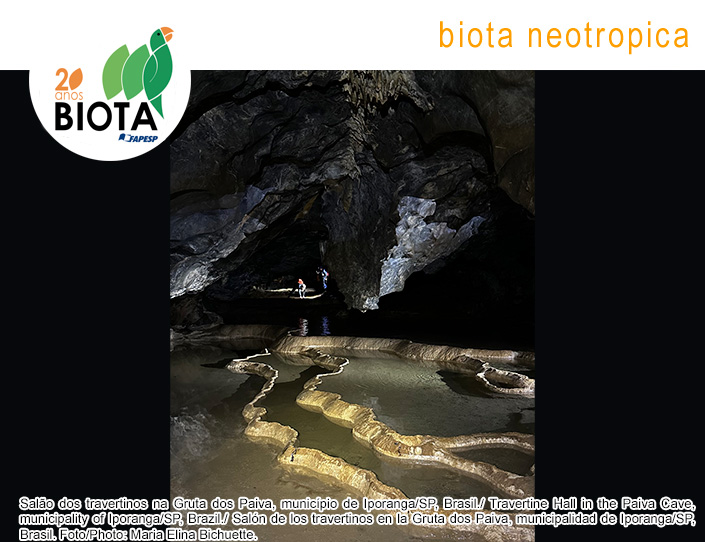Fishes of the Tibiri River basin: an urban insular hydrographic system located in São Luís, Northeastern Brazil
Abstract
Abstract In this study, 7,465 fish specimens were collected in the Tibiri River basin, representing 65 species included in 17 ordens and 37 families. The order Acanthuriformes had the highest species richness, followed by Carangiformes, Clupeiformes and Gobiiformes. Of the 65 recorded species, three are non-native to the region: Megaleporinus macrocephalus, Butis koilomatodon and Poecilia reticulata, documenting one of the most worrying human actions to natural ecosystems: the introduction of exotic species. The most abundant species was Rhinosardinia amazonica, while species such as Megalops atlanticus, Scomberomorus cavalla and Bagre bagre were rarely collected besides being categorized by ICMBio as Vunerable (VU) and Near Threatened (NT) respectively. Additionally, a potentially undescribed species Hemigrammus sp., was recorded. The study emphasizes that the Tibiri River basin hosts a high fish species richness, however, it is impaired by serious anthropic activities, facing problems for its species conservation and maintenance of the natural characteristics of its landscape. Accurate species identification and an understanding of historical colonization processes are essential for preserving the local fauna. Our results suggest the need for additional studies that integrate taxonomic, molecular, and ecological approaches to improve the conservation of the Tibiri River basin, as well as to mitigate the human pressures that influence this ecosystem.Published
2025-01-01
How to Cite
Ferreira, M. W. M., Pontes, J. K. P. N., Ferreira, M. P. P., Santos, J. P., Guimarães, E. C., Brito, P. S. de, … Ândrade, M. (2025). Fishes of the Tibiri River basin: an urban insular hydrographic system located in São Luís, Northeastern Brazil. Biota Neotropica, 25(3). Retrieved from https://www.biotaneotropica.org.br/BN/article/view/2134
Issue
Section
Inventories
